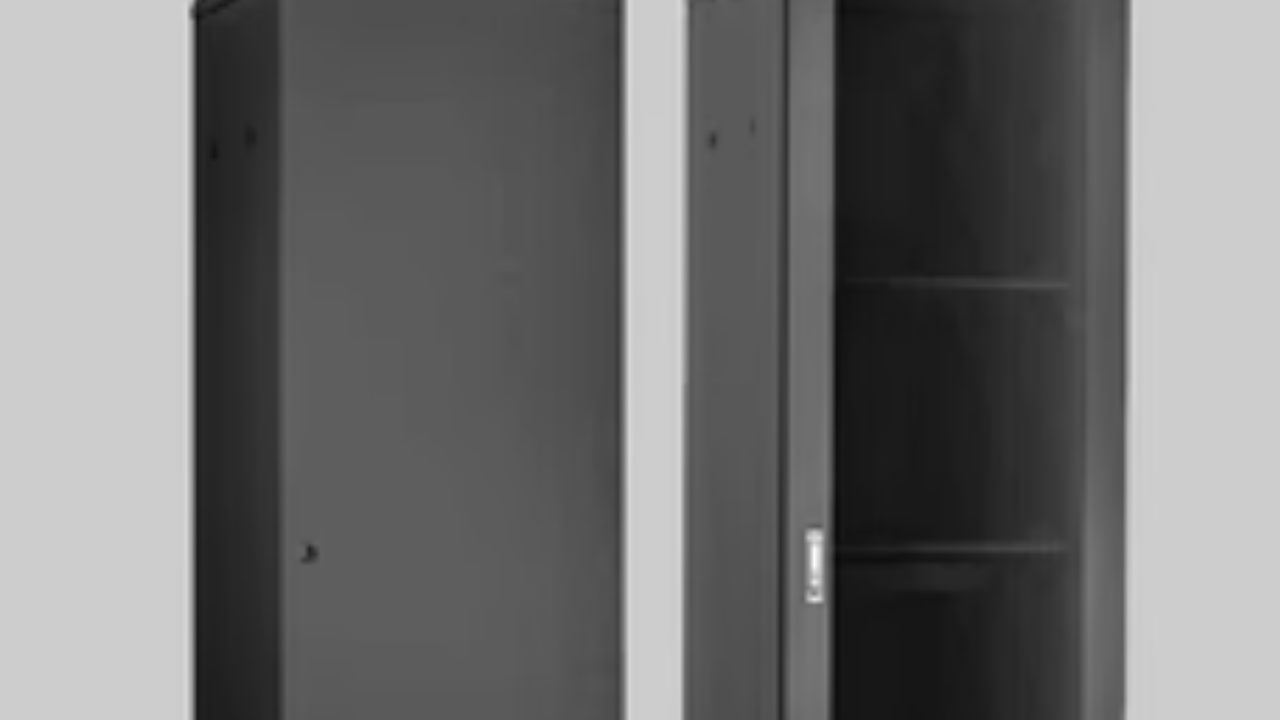Wall-mounted network racks are better suited for a variety of environments due to their space-saving design, installation flexibility, and convenience. They maximize vertical space utilization, making them excellent for environments with limited floor space. Their various mounting options enable customized placement based on accessibility requirements. Wall-mounted network racks provide a practical and effective way to organize and secure networking hardware.
Unlike floor-standing racks, which take up valuable floor space, wall-mounted racks are attached directly to walls. Wall Mounted Network Rack Manufacturers play a crucial role in providing space-efficient, secure, and versatile solutions for organizing networking equipment. These racks usually have a small footprint and are available in a variety of heights, widths, and depths to fit varying equipment sizes and installation needs.
Distinctive Features of Wall-Mounted Network Racks
In today's dynamic network infrastructure market, wall-mounted network racks stand out as versatile solutions that provide distinct advantages over standard floor-standing racks. These compact and space-saving enclosures make it easy to organize and secure networking equipment while maximizing floor space. Understanding the distinctions between wall-mounted network racks and other types of racks is critical for picking the best solution for a variety of networking situations.
Space Efficiency
Wall-mounted network racks are more space-efficient than floor-standing racks. They maximize vertical space utilization by attaching directly to walls, making them perfect for areas with limited floor space. This tiny form is especially useful in small workplaces, equipment closets, or spaces with limited layouts. Wall-mounted racks maximize space utilization while maintaining accessibility, offering a practical solution for organizing and securing networking equipment.
Installation Flexibility
Wall-mounted network racks provide greater installation flexibility than floor-standing racks. They can be placed on a wall at any height, providing flexible placement based on available space and accessibility needs. This versatility allows for installations in regions with limited or uneven floor space. Wall-mounted racks suit a wide range of installation scenarios and provide efficient space utilization in networking settings due to their numerous mounting choices.
Accessibility and Convenience
Wall-mounted network racks allow easy access to networking equipment and cables. Their design provides for quick installation, maintenance, and troubleshooting without having to bend down or crawl beneath the rack. Technicians can manage connections and conduct operations more efficiently when their equipment is at eye level. This accessibility improves operating efficiency and decreases downtime by providing quick and easy access to networking components in a variety of installation scenarios.
Cable Management
Wall-mounted network racks provide integrated cable management systems that help to organize and secure cables more efficiently. These solutions include cable trays, routing channels, and tie-off points within the rack enclosure. Wall-mounted racks increase airflow, reduce cable clutter, and lessen the likelihood of wire breakage or disconnection. Effective cable management improves system reliability and simplifies maintenance, resulting in optimal performance and lifetime for networking equipment.
Security and Protection
Wall-mounted network racks prioritize security by including lockable doors and side panels on enclosed variants. Open-frame racks can be secured with optional locking brackets or coverings. These safeguards keep networking equipment secure from unauthorized access, tampering, or theft. Furthermore, wall-mounted racks protect equipment from environmental contaminants such as dust and moisture. Enhanced security and protection maintain the integrity and confidentiality of network infrastructure components.
Load Capacity and Stability
Wall-mounted network racks are designed to withstand large loads while remaining stable. Manufacturers define weight capacities to protect the safety of networking equipment, servers, switches, and other devices. Despite their small size, wall-mounted racks have strong construction and secure mounting hardware to sustain big loads without compromising structural integrity. This assures dependable performance and safety, even in spaces that are limited or uneven.
Aesthetic Considerations
Wall-mounted network racks provide aesthetic benefits by being elegant and compact, blending effortlessly into office environments, equipment closets, or other locations. This clean and professional appearance adds to a clutter-free and organized workstation, making a favorable impression on clients, visitors, and staff. Aesthetic considerations make wall-mounted racks an appealing option for modern networking setups.
Summary
Wall-mounted network racks offer unique qualities and advantages that distinguish them from other types of racks. Their special characteristics make them perfect additions to contemporary networking environments. Understanding the differences between wall-mounted racks and traditional floor-standing racks enables businesses to make better-informed decisions when selecting the optimal solution for their networking infrastructure needs.

